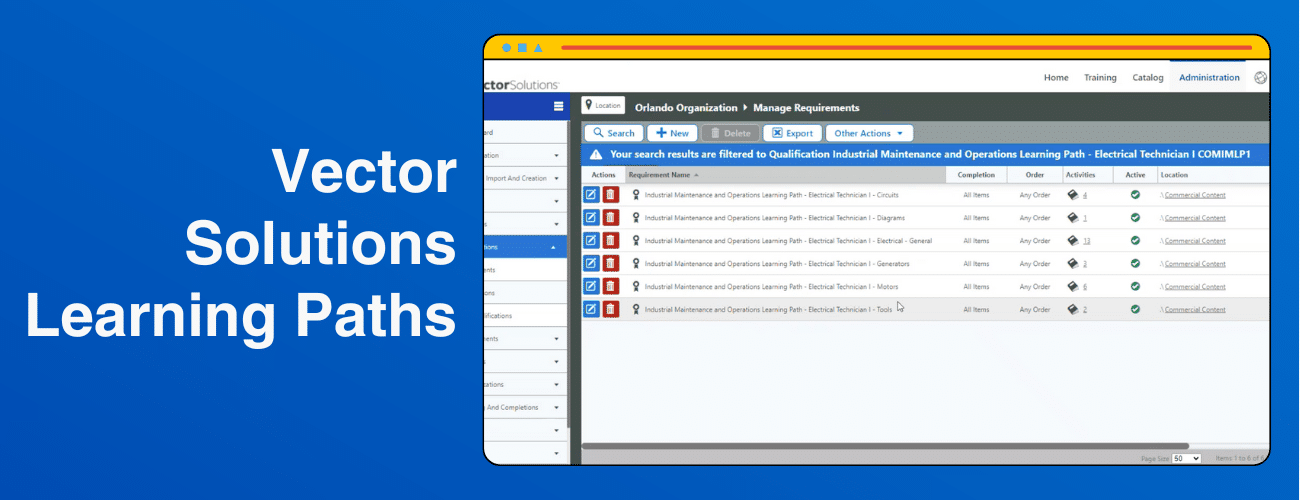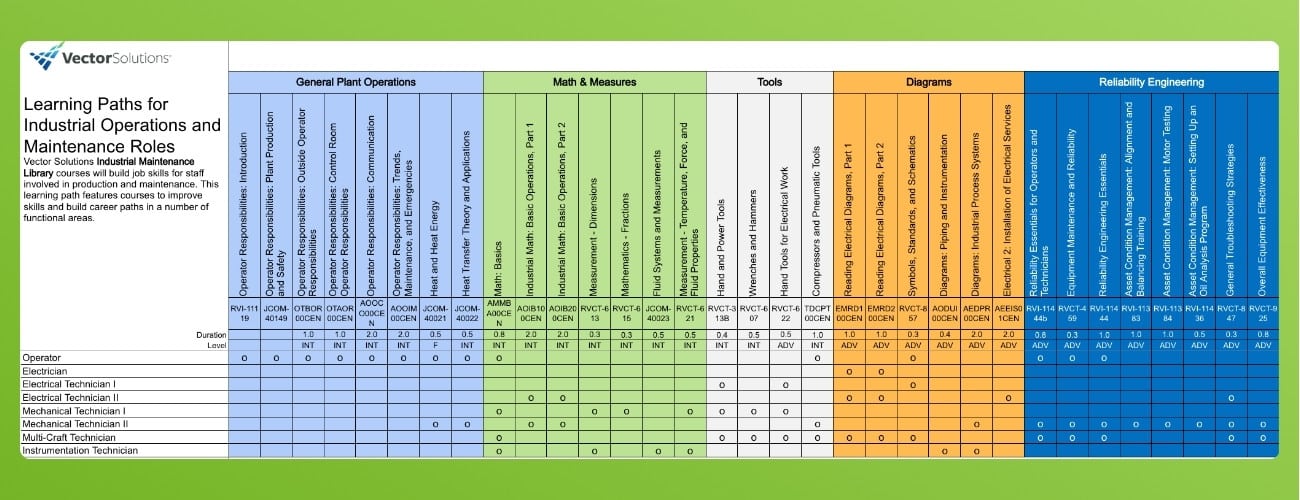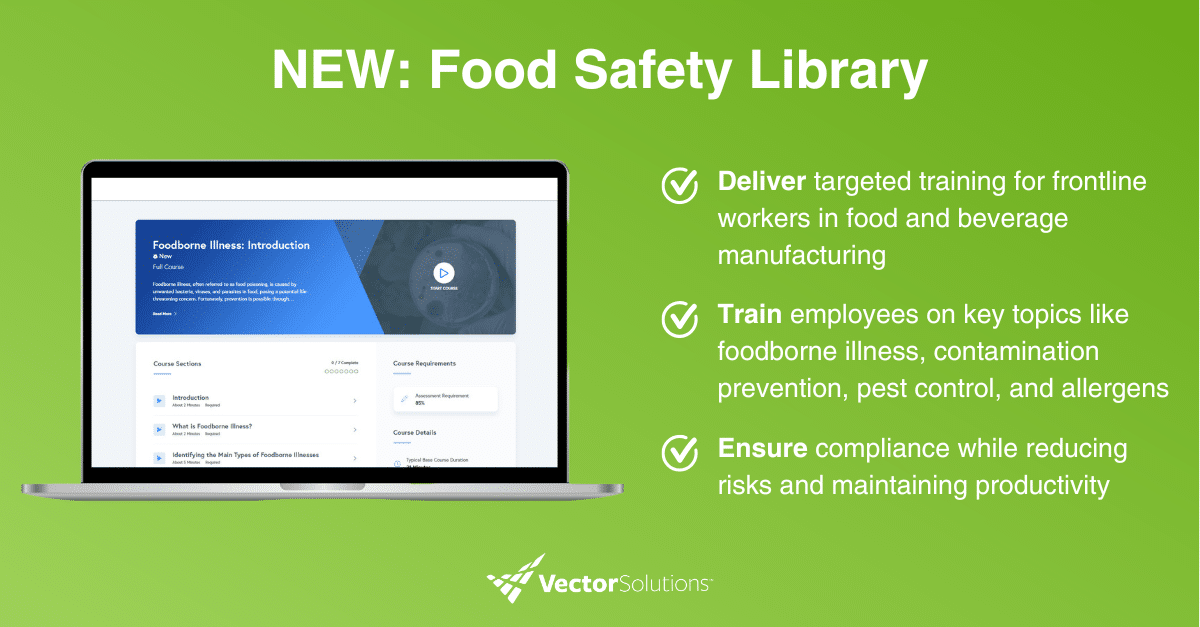February 21, 2024 7 min read

Industrial Maintenance Learning Paths: What They Are & How to Use Them
Industry:
Solution:

Manufacturers need to fill an estimated 3.4 million jobs. The scarcity of skilled workers is affecting economic growth. For six in ten businesses, skills gaps are slowing down their efforts to adapt and grow. Additionally, a Work Institute study found that the leading cause of employee turnover is the absence of career development opportunities. The key to retention in a tight labor market is to invest in developing your talent. Find out how learning paths for industrial job roles can help you retain more maintenance techs, electrical and mechanical technicians, multi-craft technicians, and more.

What is a Learning Path?
To retain your most valuable team members, it’s imperative to provide a well-defined Learning Path for future growth.
A Learning Path is a powerful tool designed to streamline training courses based on job roles, ensuring your team members develop the skills needed for both current proficiency and future career growth.
Each employee should be equipped with a role-based skill development plan, such as a Learning Path, that is tailored to their job responsibilities and individual strengths and interests to ensure a clear trajectory for their safety, skills, and career development success.
Superpower Your LMS with Learning Paths
Add Learning Paths for industrial maintenance technicians to your learning management system to easily assign training to your workforce.
Learn More
Who Benefits from Learning Paths?
Employees
- Learning Paths provide a clear roadmap for skill development, allowing individuals to systematically acquire the knowledge and expertise necessary for success in their current position. This targeted approach not only enhances job proficiency but also boosts confidence as employees navigate their career trajectory with purpose.
- Learning Paths maximize the relevance and applicability of training by empowering employees to engage with course content that directly aligns with their responsibilities.
- The structured nature of Learning Paths also facilitates efficient time management, enabling employees to focus on acquiring skills that directly contribute to their professional growth.
The Learning Path not only equips employees with the tools they need for their current role but also sets the stage for ongoing career advancement.
“A few of our positions have very specialized skill sets with opportunity for staff to be promoted from within the organization–understanding training needs is a priority.”
- Plastics Manufacturer Training Manager
Read more about how Stelray Plastic Products and Vector Solutions created the ultimate employee training and career pathing program.
Training Administrators and Supervisors
Learning paths can be especially beneficial for those tasked with assigning online training:
- Online training offers structured progression for the industrial manufacturing workforce, enabling a logical and personalized sequence of courses. Online courses assignments guided by a role-based learning path instills confidence by streamlining the quick identification and assignment of courses. This can be especially advantageous for a training administrator that is new to their role.
- Administrators and managers leveraging Learning Paths experience the invaluable benefit of swiftly and effectively onboarding new employees. By streamlining processes and ensuring efficiency in an employee’s learning and development, managers can confidently guide their teams towards rapid proficiency, fostering a cohesive and productive work environment. A Learning Path provides reassurance that the course is getting to the right person at the right time.
- Assigning a pre-built Learning Path through a Learning Management System (LMS) is highly advantageous for management–not only can online courses be assigned, but tracking and assessment of completion ensures managers can monitor their team’s progress, identify areas for improvement, and streamline the overall learning experience. This not only saves time and resources but also empowers managers with the tools needed to strategically align training with organizational goals, ultimately fostering a more knowledgeable and proficient workforce.
Corporate Organizations
Employees on a learning plan significantly contribute to the organization’s overall success. Here’s how this tool helps you actively address skills gaps and enhance productivity:
- As individuals progress through a tailored learning journey, they acquire the specific skills needed for their roles, closing existing knowledge gaps, and ensuring a more competent workforce.
- This proficiency translates into improved efficiency, as employees can execute their tasks with greater expertise.
- By streamlining the onboarding process and accelerating skill development, organizations save both time and money.
- Focusing on employee development through Learning Paths not only attracts top talent but also enhances retention, creating a workplace culture that values continuous learning and growth.
Manufacturing magazine reports that unscheduled downtime costs United States manufacturers an average of $125,000 per hour. A Learning Path can significantly reduce downtime through targeted skill development.
When employees follow a structured Learning Path tailored to their roles, they gain the knowledge and proficiency needed to troubleshoot, maintain, and repair equipment more efficiently. This leads to quicker problem resolution, minimizing unplanned downtime associated with equipment malfunctions or breakdowns. Additionally, a well-designed Learning Path emphasizes preventive maintenance strategies, enabling employees to proactively address issues before they escalate. As a result, the organization experiences improved operational continuity, reduced downtime-related costs, and enhanced overall productivity.

Incorporating Learning Paths into Workplace Training Programs for Seamless Learning Integration
Many industry-leading manufacturers have already weaved better education and training programs into their recruitment process and day-to-day operations. A few of the approaches include:
- In-Person Training: Traditional classroom-style training sessions conducted in person, either on-site or at dedicated training facilities. This format allows for direct interaction, hands-on experiences, and immediate feedback.
- Hands-On Workshops: Practical, hands-on workshops where employees engage with equipment, machinery, or tools directly. This format is particularly beneficial for skill-based training and fostering experiential learning.
- On-the-Job Training (OJT): Learning by doing, where employees acquire skills and knowledge while performing their actual job tasks. On-the-job training is often a practical and effective method for skill development in a real-world context.
- eLearning: Online training courses accessible through an LMS, offers flexibility, self-paced learning, and the ability to incorporate multimedia elements for a dynamic learning experience.
- Blended Learning (or hybrid learning): An educational approach that combines both instructor-led training (ILT) with online training. This combines the benefits of both instructor-led classes, custom courses, and vendor-delivered eLearning.
“These pre-built paths have been extremely valuable; we have used some of them as is and have also used the skill set categories within the individual paths to build additional paths for some roles.”
— Industrial Manufacturing Transformation Specialist
Using Learning Paths in your blended learning approach streamlines training efforts. They don’t replace ILT, OJT, custom content, or existing online training. They enhance training by smoothly combining existing training and aligning it with specific role-development. By bringing together internal and external resources, Learning Paths create a consistent and strong knowledge base across teams, improving the overall learning experience, empowering training administrators and managers, foster career development, and ensuring up-to-date skill development.
Unlock Success in Industrial Operations and Maintenance
Download your complementary learning path template to seamlessly align courses with eight distinct maintenance and operations job roles, catering to Operators, Mechanical and Electrical Technicians, Multi-Craft and Instrumentation Specialists, Electricians, and more. Cultivate expertise and foster career growth across various functional areas.
Download Now
Take the first step towards a safer, smarter, and more efficient workplace with Vector Solutions. Download our complimentary Learning Path Template and witness the transformative impact on your organization.
Reshaping Industrial Maintenance Employee Development
The impact of Learning Paths on industrial maintenance employees is transformative. Learning Paths are more than just a sequence of courses; they are a holistic strategy for developing your workforce. This approach not only benefits individual employees but creates a ripple effect, positively impacting the organization’s overall performance and long-term success from a more skilled and cohesive workforce, increased productivity, reduced downtime, and improved onboarding, employee engagement, and career development programs.
Take the first step towards a safer, smarter, and more efficient workplace with Vector Solutions. Leverage built-in learning paths with Vector LMS. Ready to experience it firsthand? Contact us to request a demo today and elevate your industrial operations and maintenance training program to new heights.








